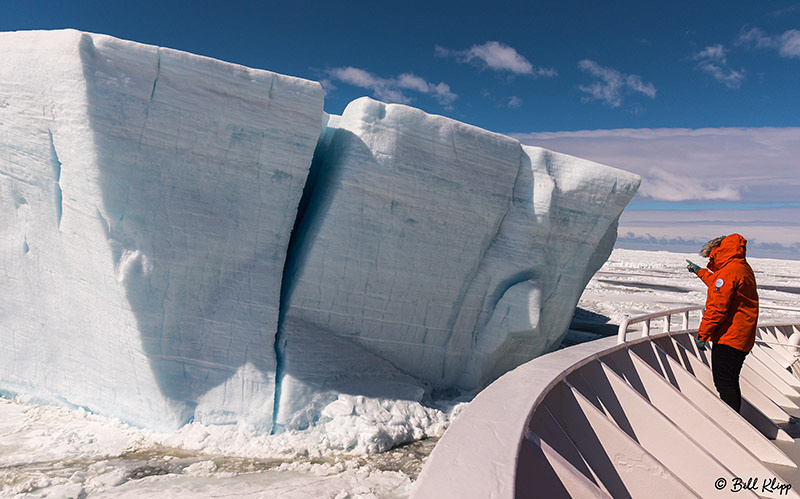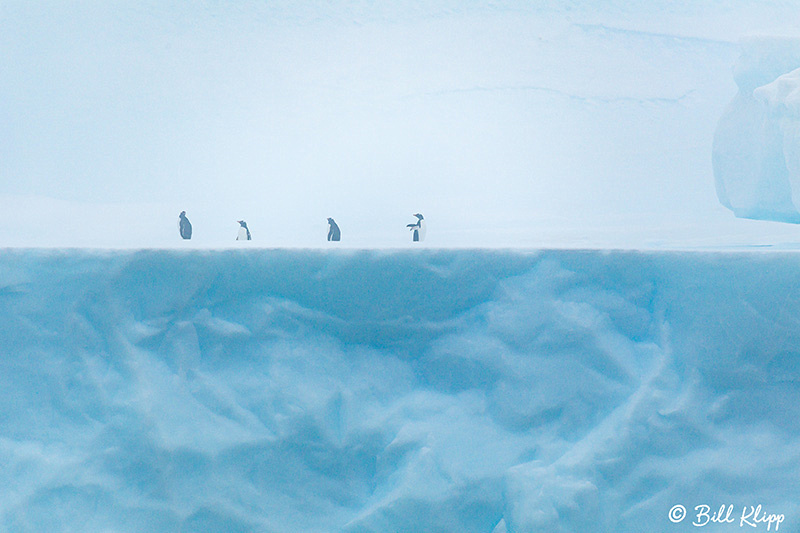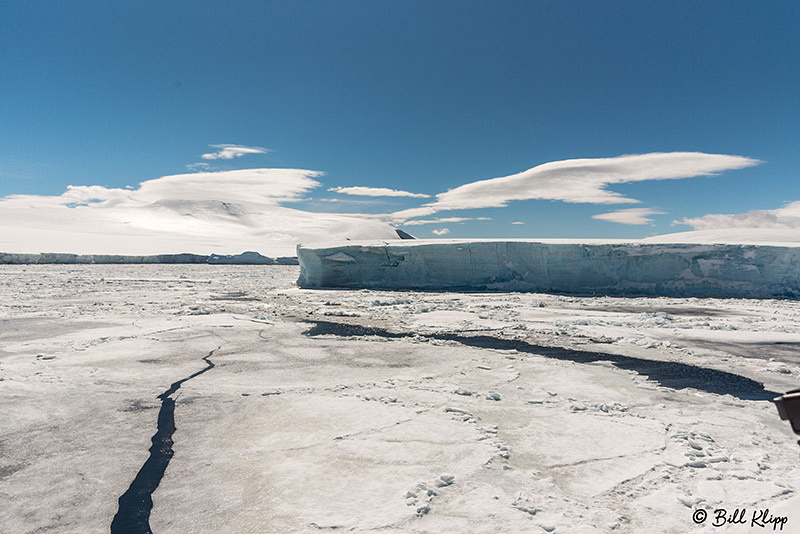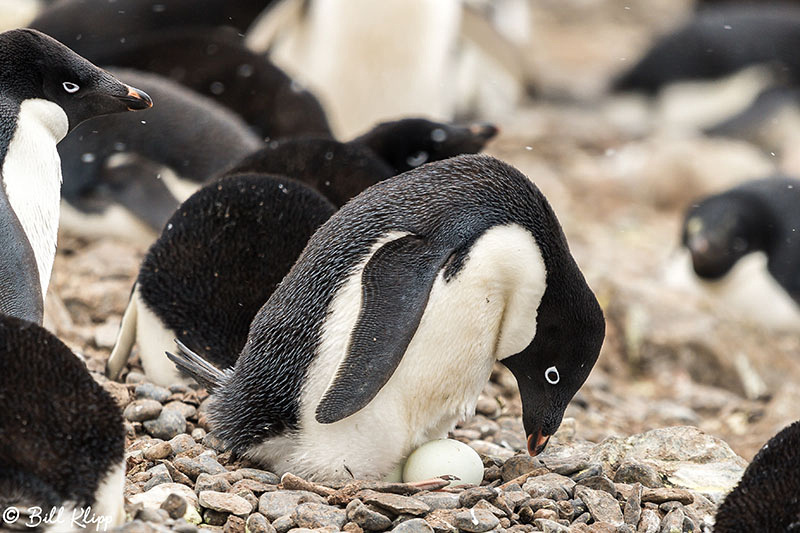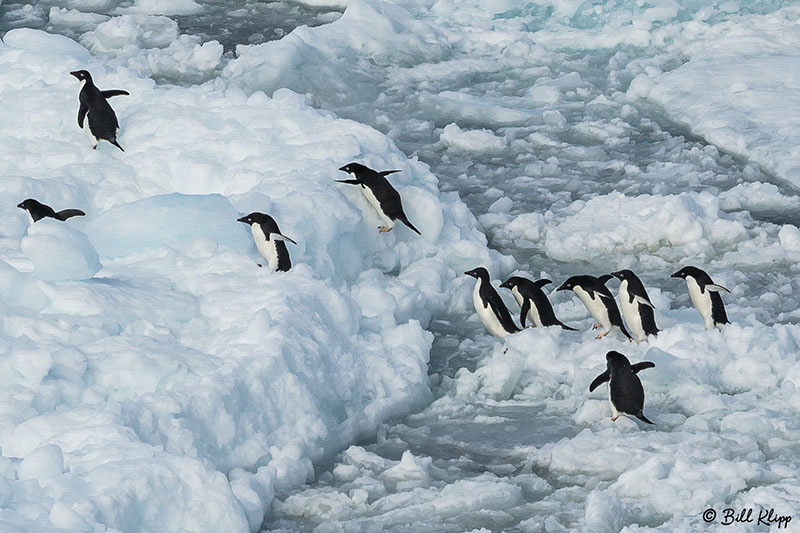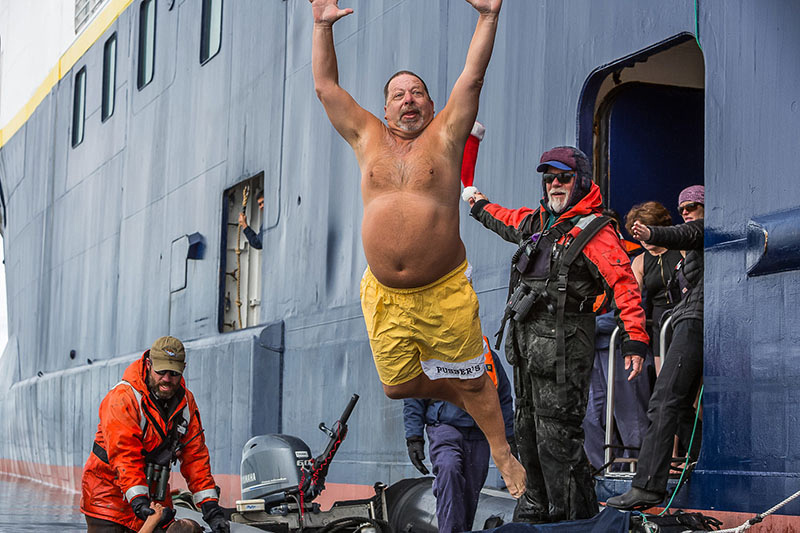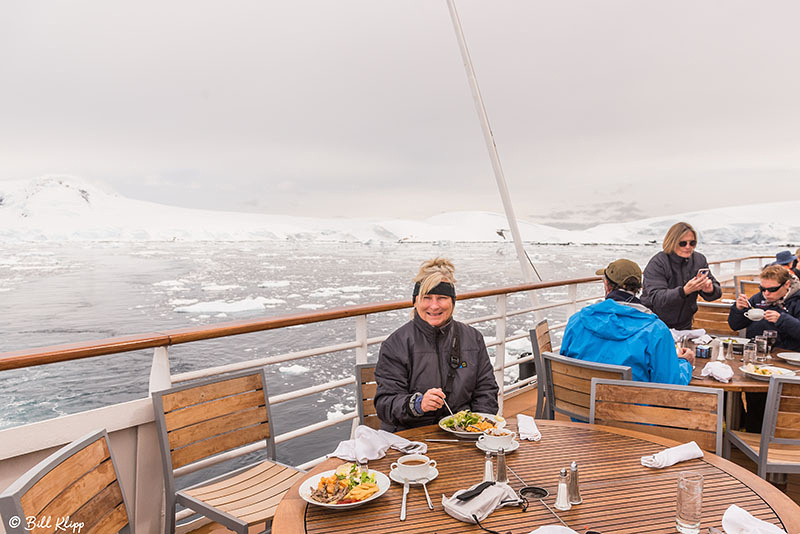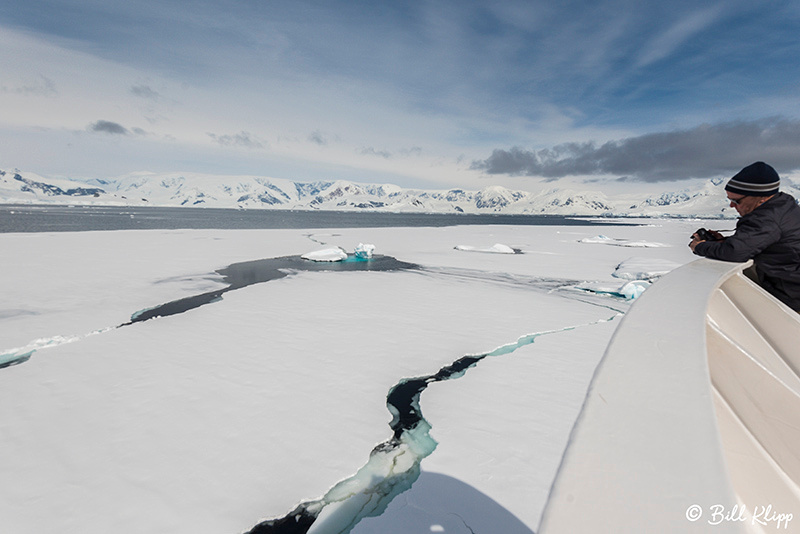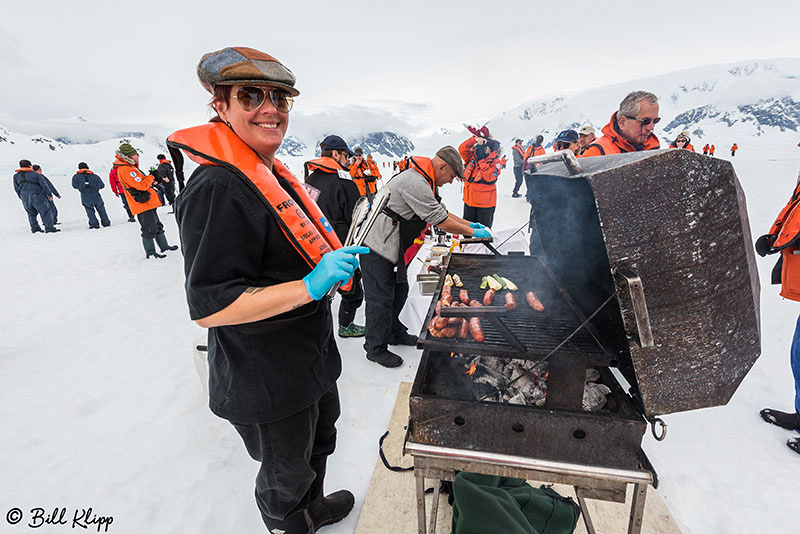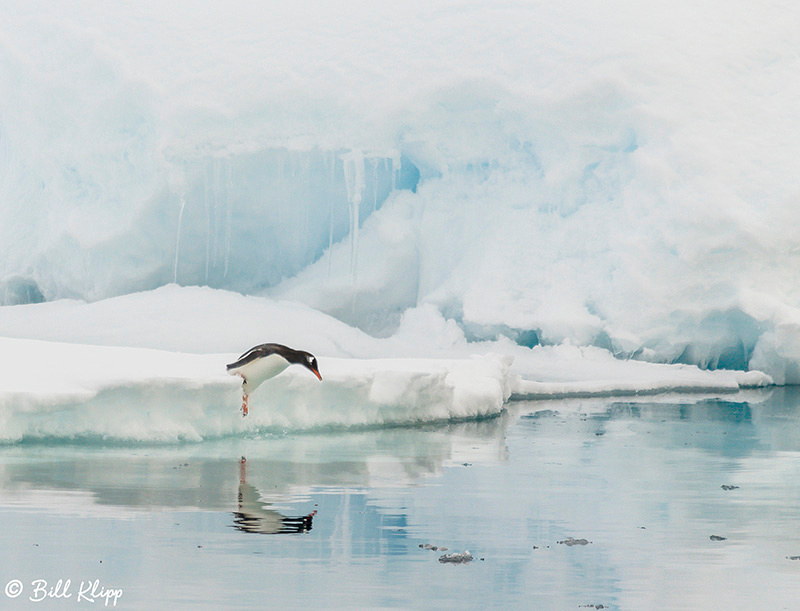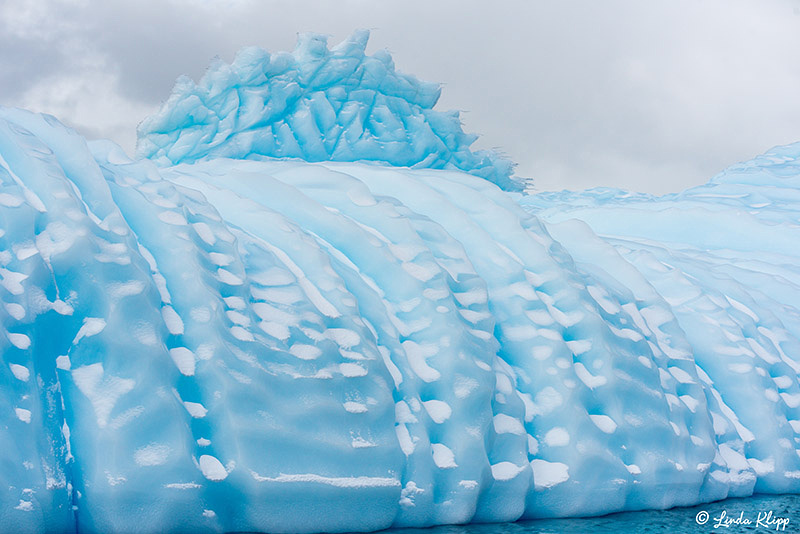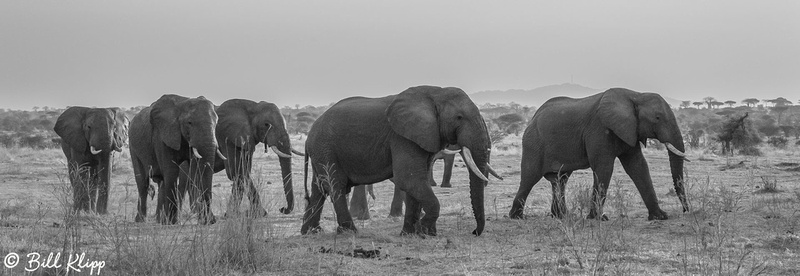


Antarctica Wanderings V – Nov 2017, “Land of Ice" part 1
Part V of "Antarctica Wanderings" continues with our arrival in the "Land of Ice", Antarctica “The thing that is most beautiful about Antarctica for me is the light. It’s like no other light on Earth, because the air is so free of impurities. You get drugged by it, like when you listen to one of your favorite songs. The light there is a mood-enhancing substance.” ― Jon Krakauer
The South Orkney Islands (our last stop) are about the halfway point between South Georgia Island and the Antarctic Peninsula. The next leg of our journey to Antarctica would be a 375 mile sail due west and south into the winds and building seas of the Weddell Sea. While some on the ship found the journey to be uncomfortable we in fact were lucky to have what the Captain described as moderate seas for this region with 15-20 foot waves and 30-40mph winds. As we headed further south the seas began to take on the appearance of another world as we passed large icebergs caught in the west to east clockwise direction of the prevailing winds and currents of the Southern Ocean.
Click above photo for a short Weddell Sea video:
Emperor Penguin entering water at Wilhelmina Bay. This was our first ever encounter with an Emperor, the largest of the Penguin species
At Sea Towards Antarctica The ocean area from 40’ south latitude to near the Antarctic Circle has the strongest sustained westerly winds found anywhere on earth. The highest frequency of gales is reported between Longitude 20’ and 60’ east, north of the Ross and Weddell Seas and the approaches to Drakes Passage. Interaction between the frigid air coming off Antarctica and the relatively warm and moist air from the lower latitude ocean areas creates the cyclonic “Roaring Forties”, “Furious Fifties” and “Screaming Sixties” storms. They make the region from 40’ to 60’ south one of the stormiest areas in the world. The main course of these cyclones is from west to east around the periphery of Antarctica. We however were lucky and avoided overly difficult weather.
After a day and a half at sea from the South Orkney Islands our first stop in Antarctica will be Point Wild on the north coast of Elephant Island. Elephant Island became famous from Shackleton’s Imperial Trans-Antarctic Expedition (1914–17), also known as the Endurance Expedition. Back in 1916 after being stranded for 281 days and following the crushing and sinking of their ship “Endurance” in the pack ice, Earnest Shackleton and 27 men used life boats and drifting ice floes to reach the uninhabited and very inhospitable Elephant Island. It’s here that they camped out in small space the size of a house under upturned life boats surviving on seal blubber and penguins for an incredible 137 days. Mean while Shackleton and five of his men headed out seeking rescue in one of their open life boats (the James Caird). Their goal was South Georgia Island a dangerous and grueling 800 mile 2+ week sail across the Southern Ocean to Fortuna Bay. If you have never read the book “Endurance: Shackleton’s Incredible Voyage” by Alfred Lansing, I would highly recommend it as it surely is one of the most amazing stories of human exploration and endurance. Now if this is the first time you heard the story you missed my previous blog chapter about South Georgia Island. Moving on ...
Elephant Island, very little flat shoreline, tough place to camp out for 4 months in the winter
Elephant Island, making the pano above
Elephant Island is an ice-covered mountainous island in the Southern Ocean off the coast of Antarctica and part of the South Shetland Islands. It was named by early explorers in 1821 due to it’s Elephant head-like appearance and the sighting of Elephant Seals on its shores. There are virtually no safe landing sites here due to the very rugged, high mountainous terrain with steep cliffs rising right out from the sea. We arrived in the late afternoon in blowing snow and very choppy seas and headed out for a pretty uncomfortable zodiac exploration of the coastline and the large Chin Strap Penguin Colony.
Exploring around Elephant Island
It was tough conditions for zodiac cruising, Chin Strap Penguin colony in the background
Cemented to the rocks, is a bust of Piloto Pardo, the captain of the Yelcho, the ship that Ernest Shackleton was finally able to get down there to save the men stranded on Elephant Island. Our ship is in the background.
As we leave Elephant island we headed south into the Antarctic Sound towards the eastern tip of the Antarctic Peninsula. We will spend the afternoon and evening at sea traversing the ice fields at the northern edge of the Antarctic Peninsula. While cruising we had a couple of presentations one of which was about the various seals we might encounter. We also had another decontamination party to prepare us for landing on the Continent of Antarctica. It was easy to tell we were in a new territory from the sounds of ice scrapping against the ship’s hull and the periodic shuddering we would feel as the ship plowed through smashing its way through the thicker ice.
We are now headed into the Weddell Sea and Iceberg Alley, famous for harboring massive tabular icebergs with their flat tops, steep sides and a length to height ratio greater than 5:1. These tabular bergs begin life as a floating ice shelf or glacial tongue attached to the land that crack and break off. These ice islands can be enormous such as B15 which was originally 183 miles long by 23 miles wide about 4,200 sq miles reaching heights of 130 feet above water. Bergs of this size can severely block navigation and impact ocean currents. As they move about following the west to east currents of the Southern Ocean they bump into land and other icebergs, they crack and erode due to wave action and of course start to melt, causing them to crack, shrink and break apart overtime. These enormous icebergs can be over 3,000 feet thick causing them to get grounded periodically and scour the sea floor as they move with the currents.
ICE, ICE everywhere Large tabular bergs sometimes 10s of miles long and 100s of meters thick broken from glacial tongues or broken from an ice shelf, Icebergs born from glaciers are large chunks that are at least 15 feet above the water line, bergy bits smaller than icebergs 5 feet above water and growlers 1 foot above water, then there is fast ice, sea ice, pancake ice and many others. In any case the shapes, colors and incredible beauty can only be described as other worldly often formed into sculptures that only nature can create. Amazing sights in every direction 24x7.
A memorable 3am sunrise
Linda at the ready as we cruise through the ice fields
Pushing through the ice of Antarctic Sound
Brown Bluff Our morning was a bit of a surprise as the ship headed towards our first “official” Continental landing at Brown Bluff, one of our favorite landing sites and home to Adelie and Gentoo Penguin colonies. Our last time here we had a freezing and blizzardly day, today as we popped out of the zodiac at high tide onto the icy embankment we were met with a very windy yet sunny blue-sky day. Linda and I set out along the shoreline headed for the colony, but we did not get very far as we just plopped down in the snow to photograph the comings and goings of long lines of Adelies and small groups of Gentoos heading back and forth between the sea and their nesting sites. We also spent some time on the edge of the colony to watch mating behavior and nest building as the Adelies would steal pebbles from each other to build their nests. While most of the Penguins were still in courtship and nest building modes a number were tending to their eggs. We also keenly watched the Kelp Gulls, Skaus and Giant Petrels as they swooped down into the colony to steal a Penguin egg for dinner.
Adelie Penguins are our favorites to watch, lots of personality
Adelies seem to like to move around in large groups. These guys gathered at the edge of the ice waiting to head out to sea, then once one jumps in they all follow like Lemmings. When one of them stops they all stop. They often hesitate in entering the water as they worry about a lurking Leopard Seal or Killer Whales their biggest predators.
Adelie adjusting it's egg in it's modest pebble nest
Gentoo Penguin collecting pebbles to build a nest
One Gentoo will sit on the egg while the other heads out to sea to forage, you can tell this guy just returned from the sea (very clean) and is about to relieve his partner so she can go forage. Its this switching time when they are most vulnerable to predation from the Kelp Gulls, Skaus and Giant Petrels circling overhead waiting for an opportunity to swoop in and grab an egg.
This Kelp Gull circled the Colony for awhile seeking an opportunity to grab an egg. Its amazing how they can hold onto it
Got to love these guys, I just laugh looking at them
Gentoo taking the leap
Gentoo Penguins
It was pretty cold this morning as it should be, we are in Antarctica after all! After our morning at Brown Bluff we spent the afternoon and rest of the day cruising through iceberg alley and crashing through the pack ice, admiring the large icebergs and seeking wildlife in Antarctic Sound and the Weddell Sea. We came across Weddell and Crab Eater Seals lying about and Penguins scurrying across the ice. There were also beautiful Antarctic Terns flying around the ship hoping that as we hit and upturned the ice they would find some underlying creatures to eat. It’s a lot a fun to be up on the bow as the ship crashes through the ice and small icebergs. You can feel the ship shudder and shake as the bow crashes through the ice scraping its way along the ship's hull removing the ship's paint little by little. The Weddell Sea is where Shackleton’s ship the Endurance got stuck in the ice eventually sinking. For us though we had a great finish to a very fine Antarctic day.
Antarctic Sound, notice the group of Adelie Penguins on the ice off the ship's bow.
Adelie Penguins on the run, as seen from the bow, as the ship plows through the ice
Weddell Seal
Adelie Penguin wandering the ice floes
Sunrise at 3:26am near the Enterprise Islands, Antarctica An Epic Day in Antarctica First up this morning was kayaking across the crystal clear radiant blue waters through the ice fields among the Gentoo Penguins and alongside the rusting hull of the "Governoren", a snow covered sunken whaling factory ship lost in time since 1915. After kayaking it was back to the ship for a quick gear reset then we headed back out again, this time in a zodiac for some ice and wildlife exploration in the neighboring bays. To top the morning off we had the opportunity for an exhilarating Polar Plunge in 30.5 degree Antarctic waters. As we reluctantly left Enterprise Island behind we were pleasantly surprised to find lunch being served outside on the rear deck, a rare event in Antarctica. ... WHAT A DAY and this was all before noon with much more to come.
If you look closely, you can see the EPIRBs (Emergency Position Indicating Radio Beacon) around our necks in case we get lost or capsize.
National Geographic Explorer anchored at the Enterprise Islands. A Weddell Seal sleeps in the sun on the ice
At the end of the whaling season in Jan 1915, the crew of the "Governoren" was having a traditional end of season party to celebrate their haul of thousands of gallon of whale oil. The party below deck got out of hand and a lamp got knocked over setting fire to the entire ship. To save the crew the Captain grounded the ship in Foyn Harbor of the Enterprise Islands, all 85 crew survived making it ashore and were rescued by another whaling ship. Some divers from our ship went down into the wreck to investigate and found many old oil barrels and artifacts still in place undisturbed for over 100 years. The rusting hull is now a nesting spot for Antarctic Terns
Click above photo for our Kayak adventure video:
It's common for icebergs to erode and melt from the bottom up as the water temps can be warmer than the air. As the bottom melts, the berg gets top heavy causing it to unpredictably flip over revealing some of the most incredible ice sculptures and designs. For certain sized or shaped icebergs you need to be mindful of not getting too close in a zodiac or kayak as they can be very unstable and potentially flip over unexpectedly on you.
Is this looking like heaven or what?
It was a beautiful day for swim. Sunny blue skies, streaky white clouds, moderate temperatures in the mid 30s F and a gorgeous backdrop. What could better? A perfect time for a Polar Plunge into 30.5 degree Antarctic waters, Got to do it! It will be my 5th time...
Here I go.....
Sea water freezes at 28.4 degrees Fahrenheit, I was lucky today it was warmer, only an exhilarating 30.5 degrees F. Notice the paddles nearby in case of heart attacks.
Click above photo for my Polar Plunge video:
You can't beat the view from this lunch Bistro In the afternoon our ship the National Geographic Explorer headed back out into the Gerlache Straits. It was nice enough for an outdoor lunch on the ship's rear deck as we headed to Wilhelmina Bay in search of fast ice where the ship could be embedded in the ice hopefully for some outdoor activities out on the ice and snow. Fast Ice is sea ice that is attached to and extending out from the land or shoreline. On our search we passed several small groups of Humpback and Fin Whales. After several attempts the Captain was able to lodge the ship into the ice and lower a gangway onto the ice for snow shoeing, cross country skiing, wandering and a BBQ. The highlight though was a lone Emperor Penguin who wandered close by to check us out. For me this was heaven to score some awesome shots of the ultimate icon of the Penguin species. This was Linda and my first encounter with an Emperor and the 8th Penguin species we have encountered on the trip.
As we sailed through the wildlife rich Gerlache Straits we came across a few Humpback Whales actively feeding
Humpback Whale tail lob
Humpback Whale fluke
Two Humpback Whales as the pass right under the bow of our ship
I finally got a shot at a double fluke
It took the Captain several attempts to find thick and stable enough ice to lock the ship into. Nothings cooler than hanging over the bow as the ship smashes through the ice, the sights and sounds are like nothing you have ever seen or heard.
Once the ship rammed into the ice and got firmly embedded, the Captain left the engines running on idle to keep us lodged in. A gangway was then lowered onto the ice
Some of the staff went out first to test the safety and stability of the Fast Ice
Helping lock the ship into the Fast Ice
Looks stuck pretty good to me
Click above photo for my "Fast Ice" time lapse video: Notice toward the end of the video the arrival of the Emperor Penguin
A special treat out on the ice
A BBQ out on the ice. Life jackets on everyone in case we fall through the ice.
Enjoying a snack out on the ice
Got to make some snow angels
An Emperor Penguin gazing on as two cross country skiers pass by.
A lone Gentoo Penguin heads back into the water
It is a rare to see Emperor Penguins in this area, it was thought this guy was 1-2 years old and was a bit lost.
On this trip we have now seen all 8 Penguin species of the Antarctic region, a first for us.
Emperor Penguin
Click above photo for a short Emperor Penguin video:
The next day we explored Danco and Cuverville Islands along with their gorgeous ice fields. Zodiac heading back to the ship anchored off Danco Island
Icebergs begin life as snow falling on land to form glaciers or ice sheets that build up over hundreds, thousands or even millions of years, flowing downhill towards the sea under their own weight as frozen rivers. Eventually they reach the sea where they sometimes break off in a process known as "calving", then floating out to sea.
Icebergs are made of fresh water and float around in sea water, small ones weigh hundreds of tons, typical ones weigh 100,000+ tons and the biggest ones billions of tons. They can be very beautiful yet very dangerous.
Most Icebergs are white in color but older icebergs can have spectacular shades of blue and green. Overtime snow builds up in layers freezing solid into ice often trapping many little air bubbles. Overtime as the ice builds up it gets compressed under very high pressure becoming extremely heavy and dense, squeezing the air bubbles smaller and smaller and forcing the smaller ice crystals to grow together and merge into larger grains. When light encounters the dense, compressed ice, much of the light penetrates it. The ice absorbs longer wavelengths of colors, such as red and yellow. Colors of shorter wavelengths, like green and blue, reflect the light creating this "leftover" blue-green light creating some remarkable colors.
Exploring the Ice around Cuverville Island
Notice the smooth sculptured texture of the ice. This berg had flipped over so you now see the bottom with some fresh blown snow.
Exploring the icebergs around Danco Island. Notice the erosion of the icebergs along the water line. Think about how that might alter it's shape and behavior over time.
Gentoo Penguins swimming past our Zodiac near Danco Island
When in a hurry these Gentoos porpoise out of the water as they swim
Sunset over Antarctic Sound
Stay tuned for the Final Chapter of "Antarctica Wanderings" VI: Land of Ice - Part 2
If you missed our last "Antarctica Wanderings" Part IV visit: South Georgia Part 2
For more photos visit Bill & Linda's photo website: http://WildlifePhotos.me © Bill & Linda Klipp 2017, All Rights Reserved Check out our online Photo Website at: http://www.wkimages.net & http://www.videos.wkimages.net / * Any use of these images requires the prior written permission of Bill & Linda Klipp the photographer, no other uses of any kind including print or electronic are permitted without the prior written permission of the photographer. |

